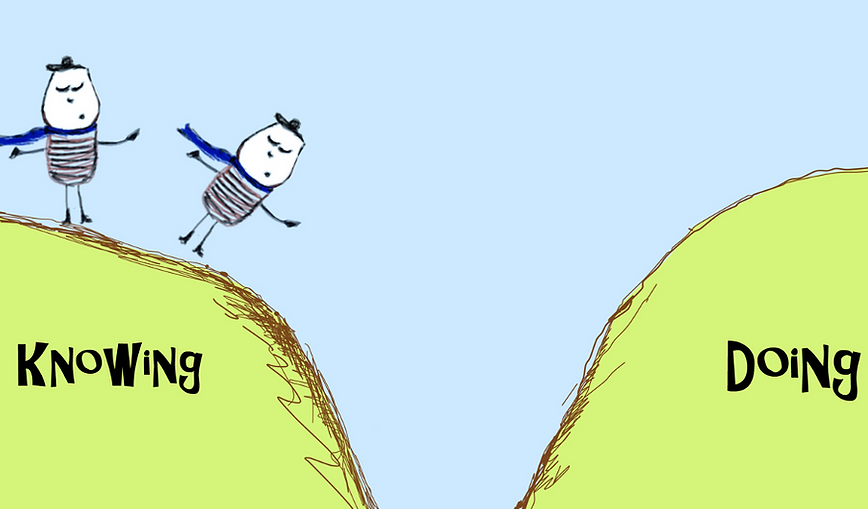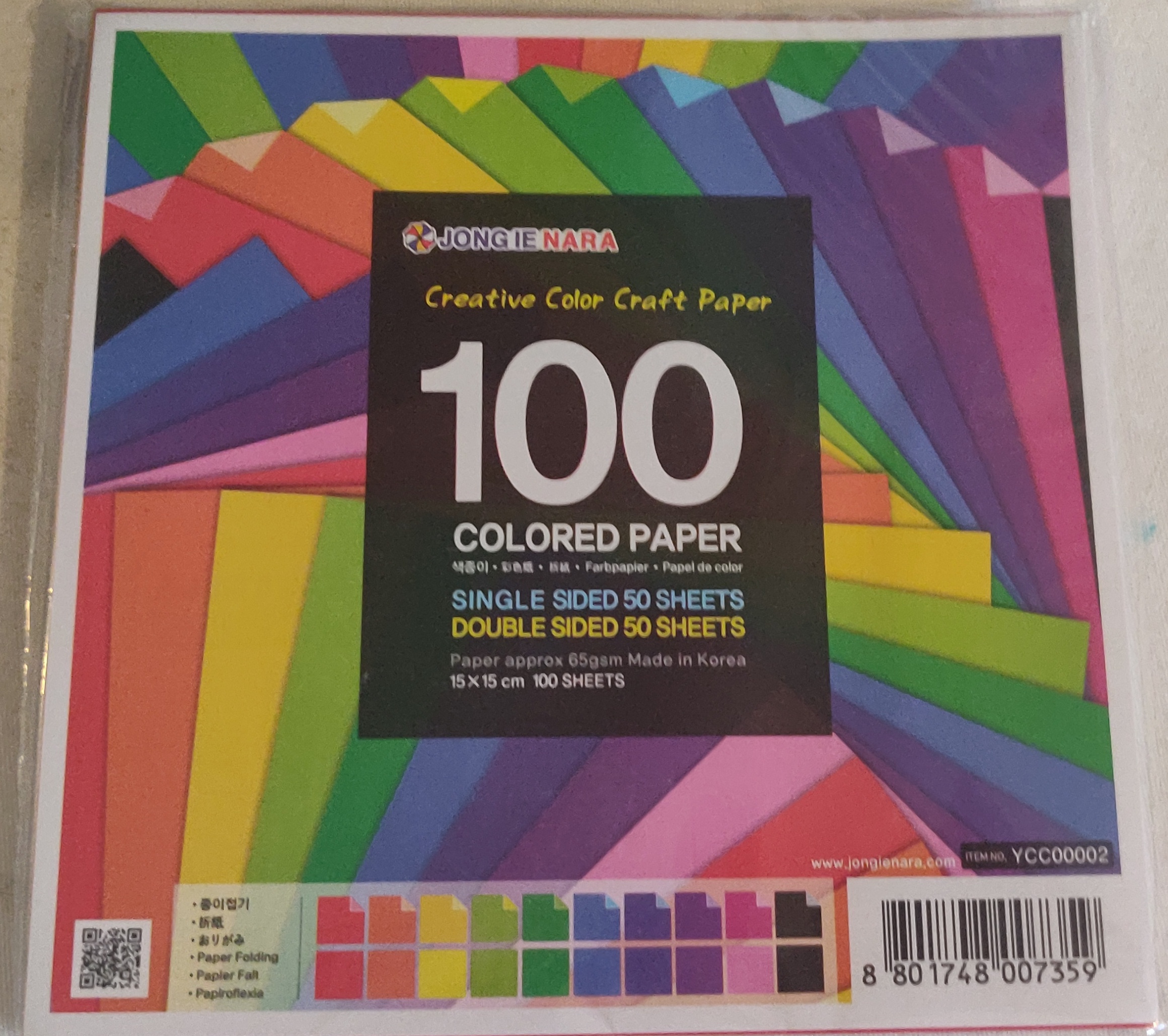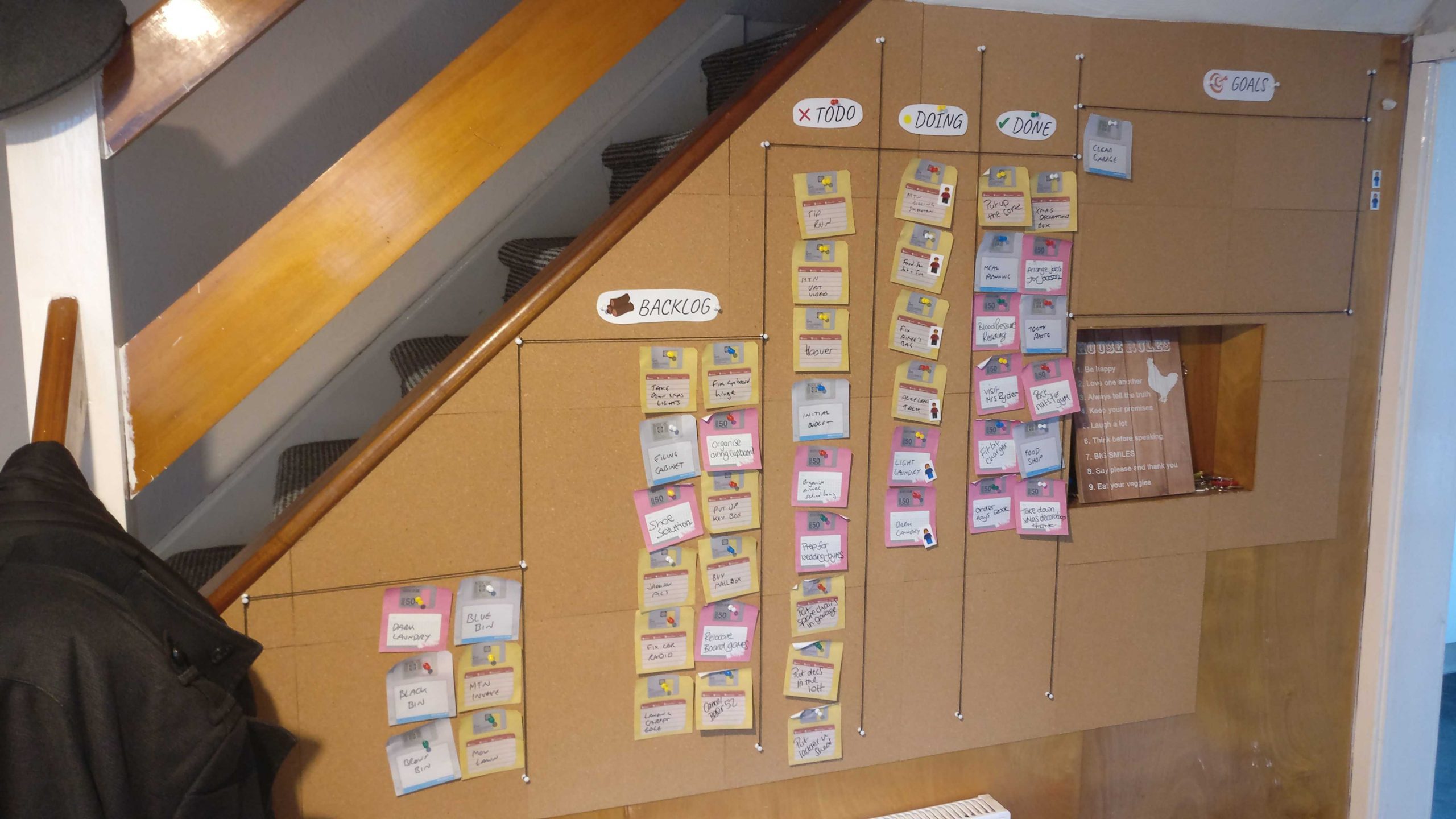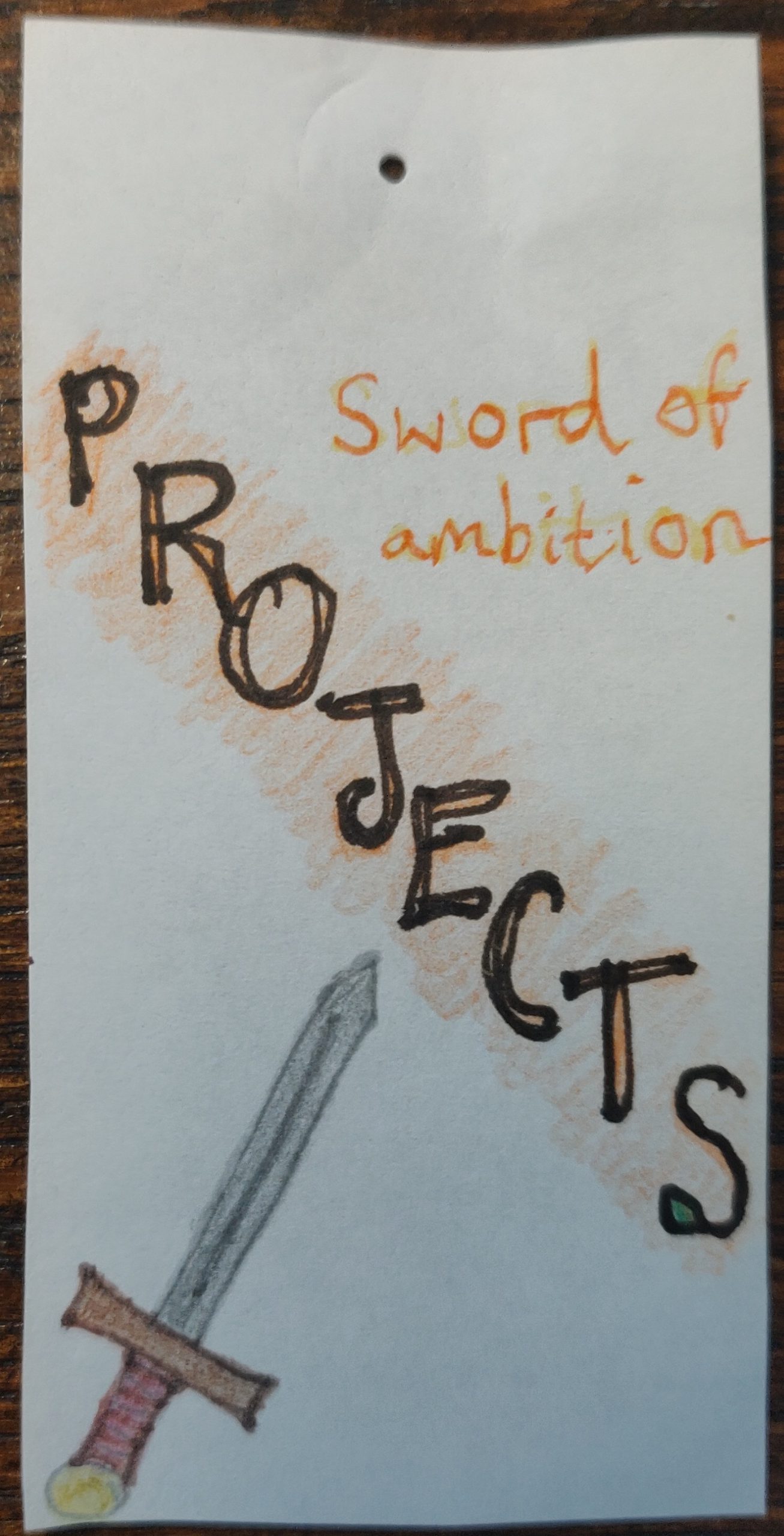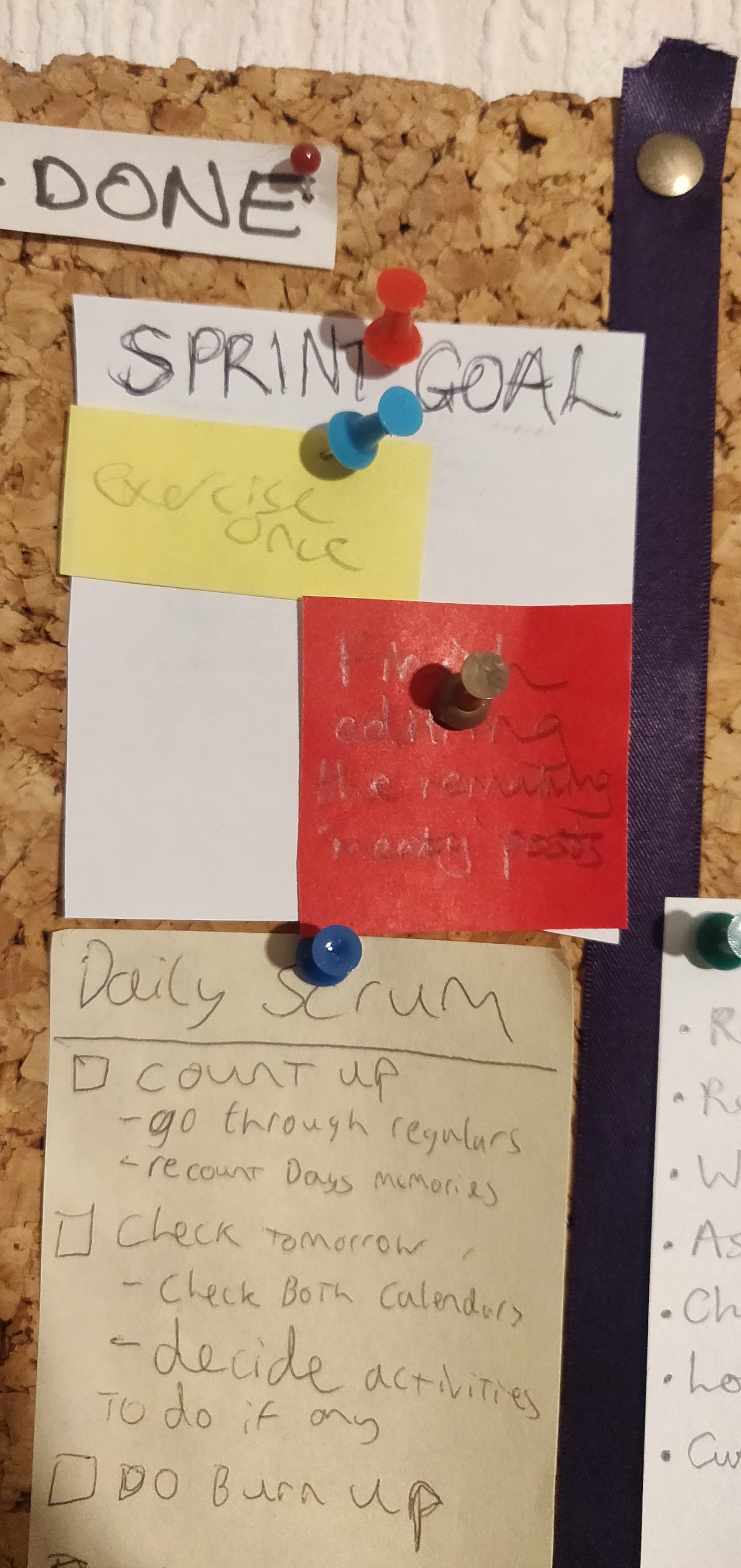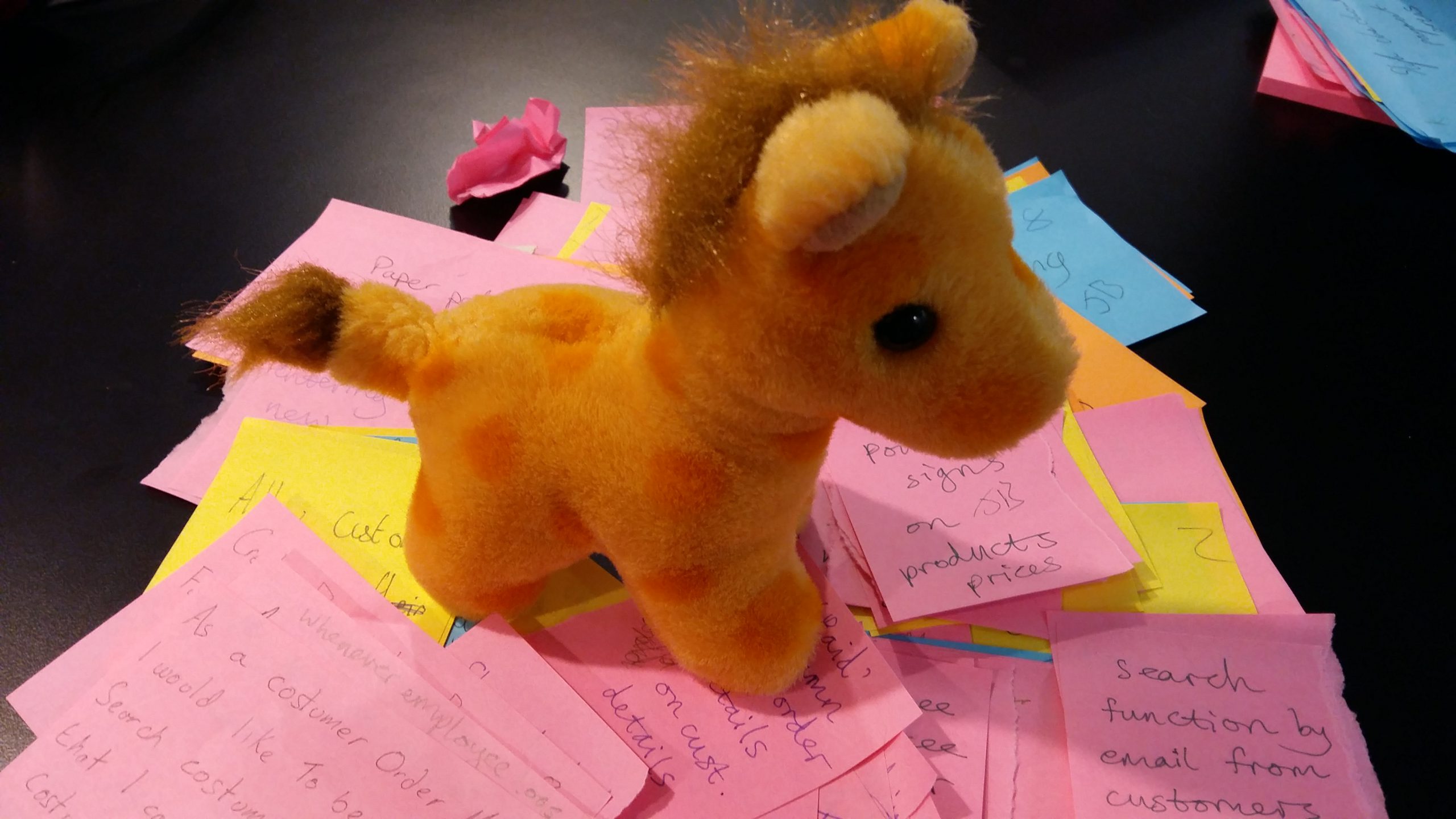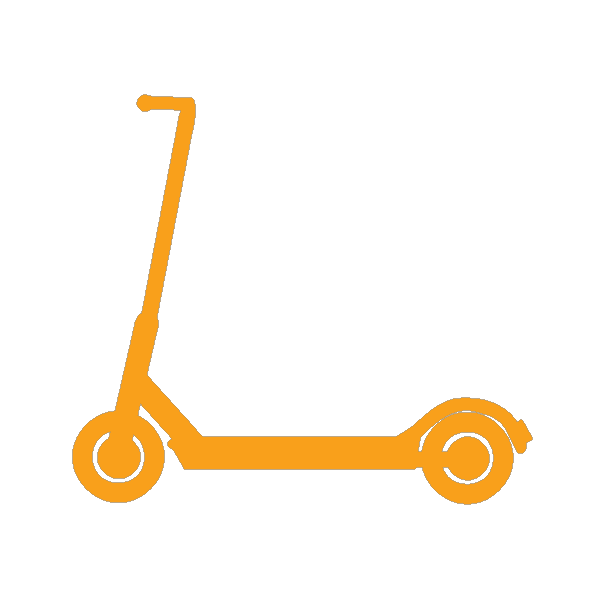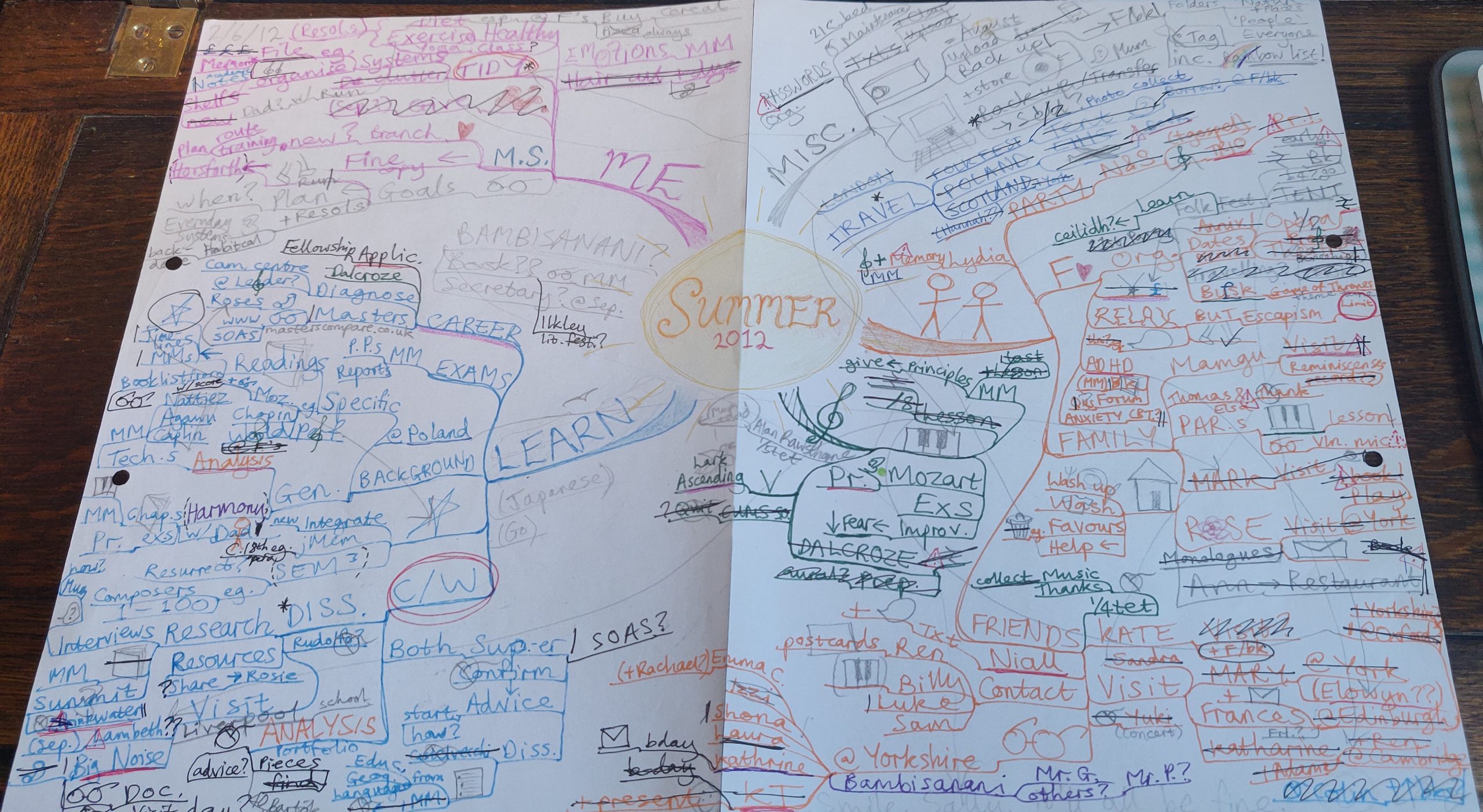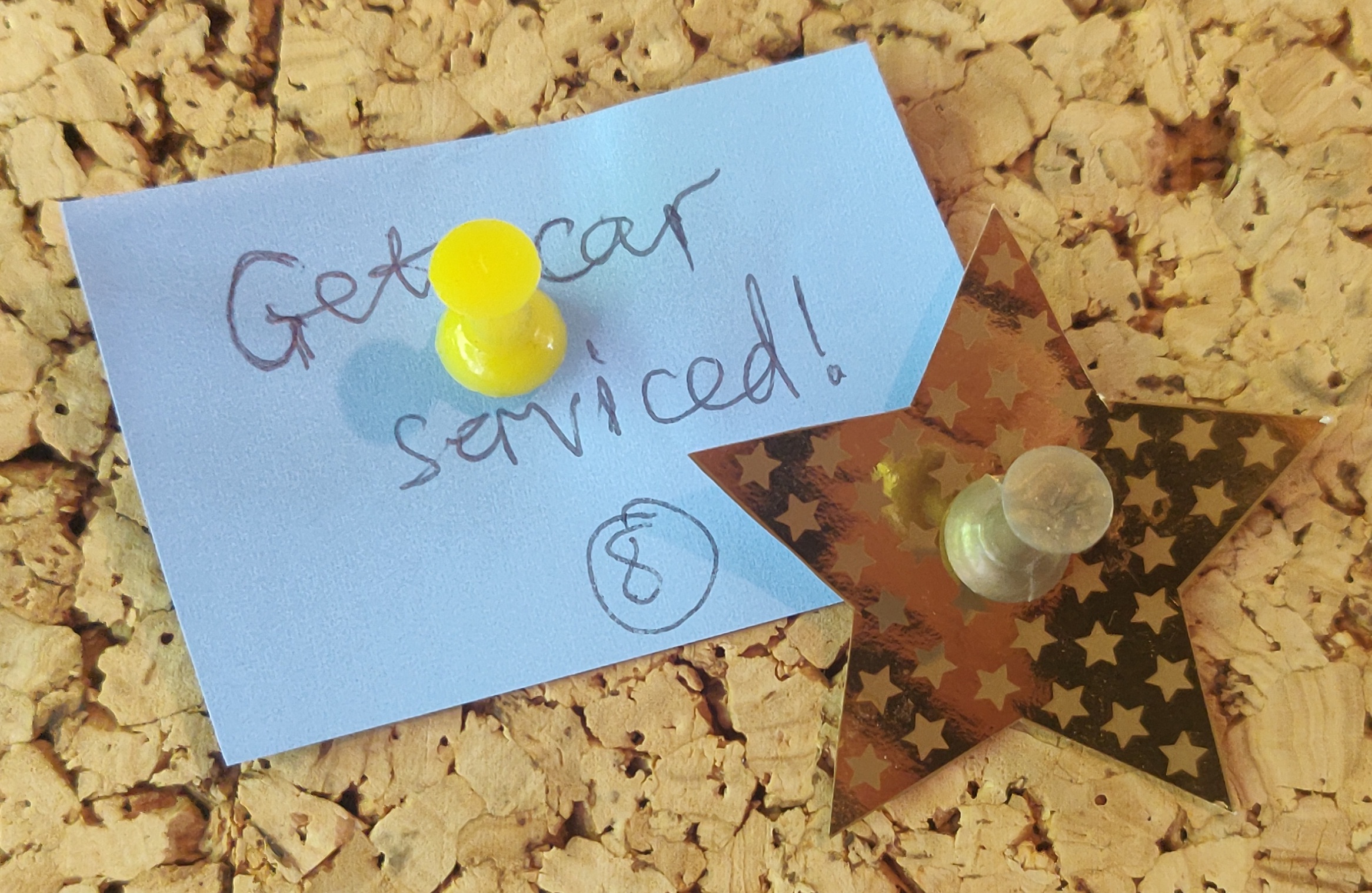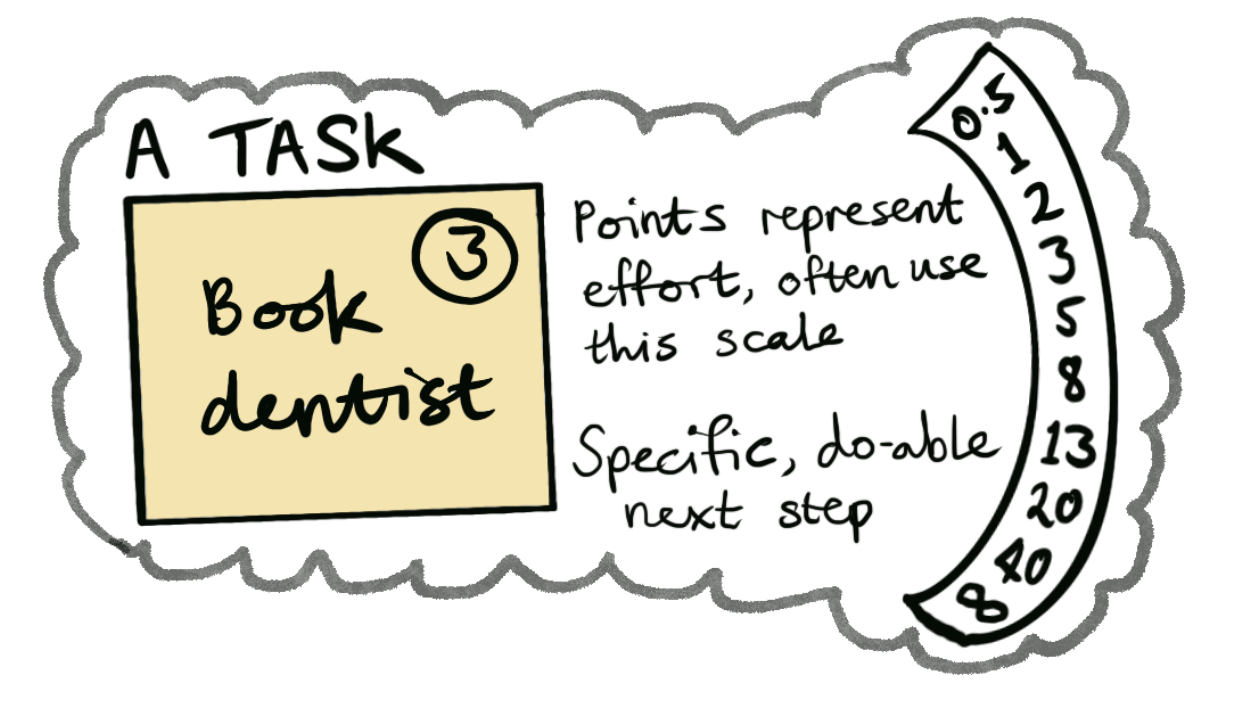Read the whole blog like a book
This is the full table of contents that I would provide if I ever published this blog as a book (which was my original intention when I wrote the first draft). If you’d like to cover all the content available, in the originally intended flow, then here it is.

What Scrum is
Scrum is a way of organising a small group of people to work together. The whole system is defined fully in the Scrum Guide, which is only 12 pages long. It involves using a board with columns represe
Start Home Scrum now using check-lists
How to get the most out of this blog This blog is written with the most possible emphasis on helping you to put the ideas into specific action immediately. In this post, there are check-lists of all t
TL;DR: Summary of the whole Home Scrum blog as bullet-points
Too long; didn’t read? No problem. Please find below a bullet-point list summary of Home Scrum of nearly all the ideas included in this blog. Finding your Home Scrum team Scrum is meant to be us
Why we use Home Scrum
Once you know the difference that it has made in our lives, it is easy to see why we use Home Scrum. A day in the life (now) My husband Francis gets home at 4:30pm and comes straight upstairs to see m
Who Home Scrum might be useful for
Who could benefit from Home Scrum? Scrum is used to help small groups of people to generate “adaptive solutions for complex problems.” A lot of things fit in the category of a complex problem, inc
The Knowing-Doing Gap
The ‘Knowing-Doing Gap’ is an idea, like Scrum, that I have borrowed from the world of corporate self-help. It is a frustrating human truth that our knowledge does not usually drive our behaviour.
Why accepting help is hard
During my final year studying Music at Cambridge University, I was riddled with perfectionism and careening towards total burn-out. Eventually, I had such a bad anxiety attack that my parents explicit
How to ask for help using Home Scrum (with scripts)
What you are actually asking for It is a good idea, and a sign of respect, to ask for specific help when approaching someone. So, what are you actually asking someone in your Home Scrum team to do? He
Paul’s Home Scrum story with his son Charlie
One example of successful use of Home Scrum with a child comes from my friend and colleague, Paul. He has young twin sons, Evan and Charlie. Charlie has autism, and struggles a lot with change. When h
Who to choose for your Home Scrum team
How to choose your team You need at least one other person to do Home Scrum. You can have more than one—the official Scrum Guide states that a Scrum team should be small, “typically 10 or fewe
Feeling safe with others is a tricky business: power dynamics and drama triangles
When Google did some research on teams, the main, and really, only common factor among high-performing teams was a sense of ‘psychological safety.’ This meant that all team members felt able to be
“A sense of poisoned rationality”: our standards and ways of working are emotive, not objective
Ways of working are emotive Over several years of thinking about ‘ways of working’ at both a corporate and a personal level, I’ve come to the conclusion that people care a lot about doing things
Our team dynamic with Home Scrum
Like many couples, Francis and I aim to be equal partners in life. However, that doesn’t always translate into equal effort in every endeavour. When it comes to Scrum, in general, I have often ended
Stuff to get for doing Home Scrum
Gathering your equipment You don’t need much to do Home Scrum, and you likely could improvise solutions from what you already have. But you may want a bit more in the way of equipment, and if so, th
How to find a good space for your Home Scrum board
The very first decision to make when getting your Home Scrum system set up is where you should put your board. It needs to be somewhere where you will see it frequently. If it is tucked away in a
Why a physical board is better for Home Scrum
Why a physical board matters I strongly recommend using a physical board for your Home Scrum system. There are dozens of digital Scrum board options (or column-based to-do lists)—the one most often
How we began using Home Scrum
I started my first day as a trainee software developer in July 2017. However, for the first three days the company didn’t teach us about coding; they taught us about Scrum. I had heard of Scrum
Some Home Scrum board layouts, from simple to overly complex
At the heart of the Scrum framework is the Scrum board. It’s best to use a real, physical board, although it doesn’t matter whether it’s a cork-board or white-board, or even just a demarcated pi
“It’s like Lego” – Why Home Scrum works well (especially for neurodivergence)
It’s like Lego: modularity, atomisation and externalisation Something that makes a Scrum board different from a to-do list is that every task is written on its own, discrete piece of paper. The task
Burn-up charts & story points: the weird world of intrinsic motivation
Capturing a task for your Scrum board is as simple as grabbing a small scrap of paper, jotting the task down, and putting it on the relevant place on your board. This is all that is required by offici
The Standard of Standards and the Sword of Ambition: thoughts on two types of goals (and how to set good ones)
Even at a job, work is not just one type of thing. This is even more true at home, where the work of life can vary wildly. So it can help to think about what we want to get done (our goals) in terms o
Life categories
I feel that a good planning system would not be complete without some colour-coding. A good level for this is to use different colours of paper for different types of tasks. In corporate Scrum, these
Sprints and Sprint Goals
What is a sprint? As stated in the introductory post, a sprint refers to the time-cycle in Scrum at the end of which you have your Sprint Review, Sprint Retrospective and Sprint Planning for the next
How to do the Home Scrum events
What are the Scrum events? In Scrum, we avoid the term ‘meeting’ because even inside the corporate world, it has too many negative connotations. They used to be called ‘ceremonies’ but now the
Times we’ve stopped doing Home Scrum for a while
There have been several times when Francis and I have stopped doing the Daily Scrum (or any Scrum events) for a few months at a time. The first was after (and during) a month-long trip to Vietnam, whi
Different flavours of Daily Scrum
The main purpose of your Daily Scrum is to meet as a whole team in front of your Scrum board and share your progress and obstacles, ideally towards your Sprint Goal. It is time-boxed to fifteen minute
Ideas for your Home Scrum retrospective
The Sprint Retrospective, as the name suggests, is a chance to retrospectively reflect on the last sprint as a team and consider how it went. As the Scrum guide says, it is for the team to “plan way
Iteration: inspect, adapt, play
The importance of iteration in Scrum cannot be overemphasised. But why do we put such weight on the idea of repeating stuff? Be empirical One major reason why Scrum is more effective than other (for w
Things you don’t think of as work that are actually work
What counts as work? Here’s an incomplete list of different types of work: Working for money (a job) School work (or learning in general) Housework Child care Other care (e.g. for elderly relatives)
On giving up and letting go
Letting go The next few posts took me a while, because I wasn’t sure what I was trying to say, or how to say it without repeating myself over and over again. Eventually I realised that they all shar
Perfectionism: the destroyer of worlds
Do you plan too much? Are you always trying to optimise every part of your life but struggling to get any of it done? There is an old Italian proverb: “Le meglio è l’inimico del bene”—“
Procrastination: listen to your own cry for help
I’ve been meaning to sit down and finish this post for the last two weeks or so. I am finally doing it now because my friend Alex has offered to act as an accountability aid by sitting with me while
Aim Low, Do Less, Go Easy: how to be kind to yourself
How do we scour the scourge of perfectionism from our minds? Well, to do that, we need to be asking how to be kind to yourself. Remember, productivity isn’t the be-all and end-all of life. There are
Your requirements (for life) are dumb: how to tell if you’re on the right track
We receive many cultural messages throughout life, and one of these, at least in the West, is ‘be productive’. It’s a loud enough message that it can seem like an obvious requirement
How to plan (and how to make planning less overwhelming)
The purpose of planning I used to think that the point of planning out my time was to fit more into my days. By cleverly combining certain errands into one trip, squeezing tasks in the spaces between
Beware scope creep
When thinking of tasks or projects or goals, it is useful to think about scope. The scope of a task or project means almost the same as its size, but with a bit more subtlety, because it is defined (b
What Kanban is and how we’ve used elements of it in Home Scrum
Kanban’s similar-but-different approach Kanban is a similar system to Scrum that is meant to help visualise your workflow and improve it based on empirical feedback from reality. Instead of using st
Extra ideas for gamifying your Home Scrum system
There are many ways of expanding on the basic Scrum framework, and in this post I have put together a bunch of suggestions for extra things Francis and I have used that have helped us to get more out
Digital Home Scrum board options (if you have to)
As I say in this post, I would definitely encourage you to use a physical Scrum board. However, there are situations where a digital Scrum board will be the only feasible option, especially if not all
Definition of Done, Definition of Ready, and Acceptance Criteria
The following ideas are not all an official part of Scrum, but they are often used in conjunction with it as complementary techniques. Francis and I don’t use them in our Home Scrum, as we struggle
T-shirt sizes, planning poker, and capacity/velocity
Extra things you can do around sizing tasks One way to check that your tasks are a reasonable amount of work and have been broken down to the right level is to size them. When you’re saying whether
Role of a Product Owner
In an official Scrum team, there are three roles: the developers (that is, the people doing the work), the Scrum Master, and the Product Owner. A Product Owner’s job is to own the Product Backlog. A
Role of a Scrum Master
Like the Product Owner, the Scrum Master is a special role within an official Scrum team. Their role is an unusual one quite unique to Scrum. They are responsible for several things. They are the guar
PARA: personal knowledge management system
An area of personal organisation that isn’t much discussed directly is that of personal knowledge management. These days you can find pretty much any knowledge that you need, but once you’ve colle
Mind-mapping
I love making mind-maps. Mind-maps can be used for whenever you’re trying to think about something. I use them for planning, but also to prepare ideas for public speaking and for writing, for studyi
Pomodoros, Animedoros, Work-cycles, and Relays
Pomodoros Pomodoros are a classic focus technique of which you may have already heard. Here is the website for the original, official idea. It is essentially time-boxing: doing one task for twenty-fiv
Focusmate
If I could give people with ADHD one website to help them, it would be Focusmate. For a very reasonable monthly fee of $5, you can link up with another person online to complete a fifty minute block o
Tiny Habits
The idea of creating habits out of micro-behaviours has gained traction and popularity with the more recent book Atomic Habits by James Clear, but well before that there was BJ Fogg and his Tiny Habit
Bullet journaling
Bullet journaling is the system I would recommend for neurodivergent people to use if you can’t find others to do Home Scrum with you. The bullet journaling system was designed by a developer with A
Habitica and Loresome
Habitica The Habitica website is a wonderful community of people who all struggle to get things done, but often do a lot better by putting everything they need to do through the world of Habitica. You
Meditation and Mindfulness
You don’t need any technology or tools to practise mindfulness (although the meditation apps Headspace or Balance are good places to start learning about it). When I was trying to think of thing
Freedom App
I am using the Freedom app right now, in order to keep focused on writing this blog post. It lets you block whatever apps and websites you need to, across all the devices you need to, for whichever ti
WhatsMock
An unusual app that I use to help myself cope with life is called WhatsMock. (This app looks like a similar one for iPhones.) WhatsMock is used to create fake WhatsApp conversations, which you can the
Finch app
The Finch app is essentially a phone game where you can look after a virtual pet (a finch, shockingly). The difference is that the whole game has been designed to encourage self-care. You are presente
Writing down every step of a task as I do it
Mapping steps of a task as I go One of the problems with doing any task (although particularly something technical like coding) is simply how to hold the steps of a task in mind, and remembering what
Anki flashcards
Anki is an app/website for memorising flash cards. Just like with any flash cards, you have a question or prompt on one side and an answer on the other. A common use for flashcards is having a word in
The iterative method of practising
How to practise a physical skill As a child, teenager and young adult, I spent a lot of time practising violin and piano. As I have discussed elsewhere, I think the approach I took was far too rigid a
Counselling directories
When considering how to live a good life, any self-help resource that doesn’t mention mental health is not considering the full picture. To that end, I wanted to mention how to get an accredited cou
Forest app & Sleep Town app
Forest app The Forest app has a very simple premise: it helps you to stop using your phone (or tablet, or particular websites on your desktop) for a particular period of time. How? While the Forest ap
Other thoughts on living a good life (An incomplete list)
This post is going to provide a quick overview of three of the main ways I’ve tested out about how to be a good person. The kyriarchy You probably know what the patriarchy is: the system built i













